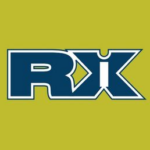The Evolution of Compounded Ketamine: An Unexpected Win for Ketamine Patients
Has COVID-19 created a new business opportunity for compounded oral ketamine? The move from traditional physician’s office treatment to at-home treatment is an effective and comfortable method for both patients and providers. Patients can continue treatment from the safety of their homes, while improving the flexibility of valuable provider office appointments. During a pandemic both benefits are crucial to decreasing transmission risk.
By Stephanie Baumhover, PharmD, BCPS
Ketamine is a Schedule III medication that is commercially available in an intravenous (IV) form. It is labeled for use in sedation and analgesia during surgical procedures. It has gained increased usage off-label for treatment of severe depression as well as pain and anxiety. Treating refractory depression with ketamine can be done with an IV injection at specialized clinics, via a nasal spray administered in-office, or oral (sublingual or buccal) ketamine at-home from a compounding pharmacy.
Commercially Available Ketamine Forms & Uses
IV injection of ketamine has been used for several years for treatment of severe depression. It involves giving periodic injections at a surgical center or specialized provider office. This use of IV ketamine for depression traditionally involves a visit to the physician, increased level of nursing care, post-administration monitoring and insurance approval prior to administration. These can make IV ketamine for depression an expensive and time-consuming treatment choice.
In March of 2019, esketamine was FDA approved in a nasal spray form for use in a physician office only. As the s-enantiomer form of ketamine, it is the only other commercially available form of ketamine. The nasal spray was designed for treatment-resistant depression. Spravato (esketamine) is distributed through a restricted program to certified offices and personnel only. It requires a two-hour post-administration evaluation, assistance with transportation leaving the physician office and specialized monitoring.
Both of these options can be extremely limiting for patients. The cost, time associated with administration and monitoring, insurance approval and scheduling inconveniences have led many patients to seek other alternatives. Treatment refractory depression can lead to suicidal behaviors. Finding a treatment option that is dependable, safe, and accessible can literally save lives.
Compounded Ketamine – An At-Home Option
Ketamine troches (dissolving lozenge) are an oral option for home use that provides an acceptable treatment option to commercially available forms of ketamine. Ketamine is known to have variable bioavailability when swallowed. Its sublingual and nasal absorption are slightly more predictable but can still be variable if proper administration techniques are not followed. Uniformity of product preparation is essential for assessment of the appropriate customized dose per patient. Variability or poor content uniformity may affect the quality of the patient experience and the level of antidepressant effect. This may mistakenly lead to a dose change and too much ketamine for the next prescription.
Evidence for Oral Ketamine
Palliative care involves maximizing functionality and improving quality of life for patients nearing end of life. A small study in 2013 examined low doses of oral ketamine for relief of depression and anxiety in hospice patients. In all patients who completed the study, improvements in anxiety and depression were reported. Both clinical and standardized tests were used to gauge results. A statistically significant improvement was seen in both anxiety and depression without any significant side effects in all patients. Additional randomized, controlled studies are warranted.
COVID-19 Increases Need for Compounded Ketamine
Oral ketamine has become an important treatment option for severe depression which has failed other treatments, as well as rapid anti-depressive effects in the palliative care population. The movement towards telehealth and virtual care has made regular appointments for ketamine shots or nasal sprays challenging or nonexistent. Patients in high-risk categories, concerned about viral exposure or sharing a home with a high-risk friend or family member are ideal candidates for compounded ketamine troches. At home dosing with appropriate training and treatment contracts have been highly successful for many patients and remain the safest option at this time. For pharmacies pursuing this growing opportunity, ensuring high-quality and consistent uniformity is critical in this high-risk patient population. Rapid growth and demand pressures strain resources and risk compound quality, and patient safety in the process. Flexible precision compounding systems like Vitae Industries’ AutoCompounder provide pharmacies an option to expand into new compounding opportunities. With the evolution of remote dosing of ketamine, pharmacies must also evolve to provide consistent quality compounded ketamine troches to rapidly meet sudden demand spikes.
—
Stephanie Baumhover, PharmD, BCPS is a board-certified clinical pharmacist and freelance medical writer. She has professional experience working in regulatory compliance, pediatrics, oncology, internal medicine, and infectious disease. Stephanie has over 20 years medical experience and over 10 years as a medical educator to health care professionals and patients.




